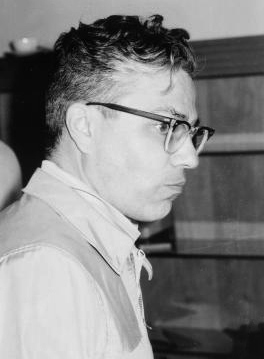Armand Borel facts for kids
Quick facts for kids
Armand Borel
|
|
|---|---|

Armand Borel in Bonn, 1967.
|
|
| Born | 21 May 1923 La Chaux-de-Fonds, Switzerland
|
| Died | 11 August 2003 (aged 80) Princeton, New Jersey, United States
|
| Alma mater | ETH Zürich |
| Awards | Leroy P. Steele Prize (1991) |
| Scientific career | |
| Fields | Mathematics |
| Institutions | Institute for Advanced Study |
| Doctoral advisor | Jean Leray |
Armand Borel (born May 21, 1923 – died August 11, 2003) was a very important Swiss mathematician. He was born in La Chaux-de-Fonds, Switzerland. From 1957 to 1993, he worked as a professor at the Institute for Advanced Study in Princeton, New Jersey, USA. He made big contributions to several areas of mathematics. These areas include algebraic topology, which studies shapes using algebra. He also worked on Lie groups, which are special groups used in geometry and physics. Armand Borel was also one of the main people who created the modern theory of linear algebraic groups. These are groups that can be described using algebraic equations.
The Life of Armand Borel: A Journey in Mathematics
Armand Borel began his studies at the ETH Zürich university. There, he learned from famous mathematicians. These included Heinz Hopf, who studied shapes and spaces, and Eduard Stiefel, who worked with Lie groups.
Early Work in Paris: Exploring Shapes and Spaces
In 1949, Borel moved to Paris, France. He worked with Jean Leray and Henri Cartan. He used a special math tool called the Leray spectral sequence. This helped him understand the shapes of Lie groups and their "classifying spaces." These are like maps that help mathematicians organize different types of Lie groups. In the early 1950s, he also worked with Hirzebruch. Together, they greatly improved the theory of "characteristic classes." These are ways to describe properties of geometric shapes using numbers.
Working with Algebraic Groups: A Key Discovery
Armand Borel worked closely with other mathematicians on important projects. He collaborated with Jacques Tits on algebraic groups. These are groups made of numbers that follow specific algebraic rules. He also worked with Harish-Chandra on "arithmetic subgroups."
Understanding Borel Subgroups: A Special Kind of Group
One of Borel's key ideas was the "Borel subgroup." Imagine a large algebraic group, like a big collection of numbers that follow certain rules. A Borel subgroup is a smaller part of this group. It is the smallest possible subgroup that makes the larger group behave in a certain way when divided by it. For example, if you have a group of special matrices (like number grids), a Borel subgroup could be the matrices where all numbers below the main diagonal are zero. This idea helps mathematicians understand the structure of complex algebraic groups.
Borel–Moore Homology: A Way to Study Complex Spaces
Armand Borel also helped create the Borel–Moore homology theory. This is a powerful tool for studying very general and complex spaces in mathematics. It is closely connected to "sheaf theory," which is another way to understand how information is organized across different parts of a space.
Awards and Recognition: Honoring His Contributions
Armand Borel received many awards for his important work. In 1978, he was given the Brouwer Medal. In 1992, he won the prestigious Balzan Prize. The prize committee praised him for his "fundamental contributions" to the theory of Lie groups and algebraic groups. They also recognized his efforts to support high-quality math research and share new ideas. He was a member of several important academic groups. These included the American Academy of Arts and Sciences and the United States National Academy of Sciences.
A Little Family Mystery
Armand Borel passed away in Princeton. People often asked if he was related to another famous mathematician, Émile Borel. He would sometimes say he was a nephew, and other times say he was not related at all!
See also
- Borel–Weil–Bott theorem
- Borel cohomology
- Borel conjecture
- Borel construction
- Borel subgroup
- Borel subalgebra
- Borel fixed-point theorem
- Borel's theorem
- Borel–de Siebenthal theory
- Borel–Moore homology
- Baily–Borel compactification
- Linear algebraic group
- Spin structure
Images for kids


